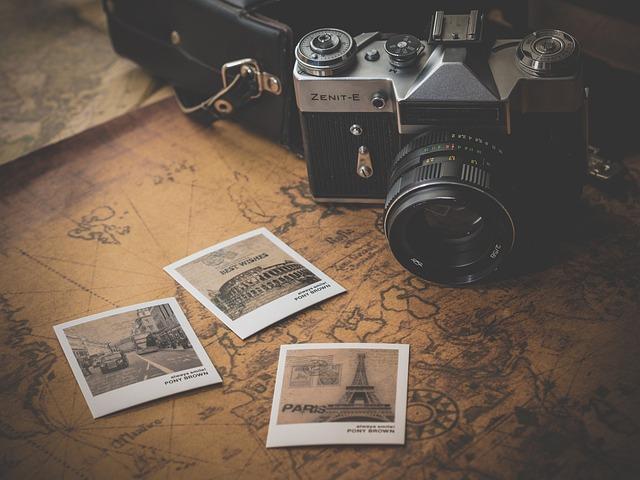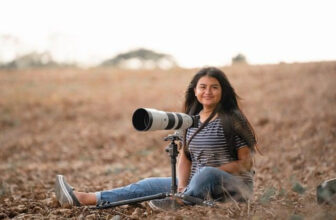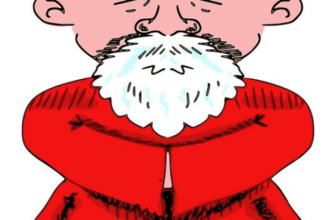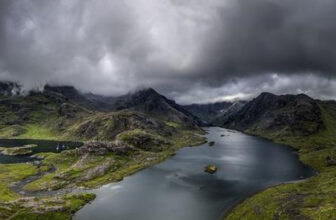Capturing the Action: Essential Sport Photograph Tips
GoogleAds

Whether you’re a seasoned professional or a casual sports enthusiast, capturing the action on the field can be a thrilling yet challenging task. From fast-paced basketball games to high-energy soccer matches, successful sports photography requires a combination of skill, timing, and technique. In this article, we will explore some essential tips and tricks to help you take your sports photography to the next level. So grab your camera and get ready to capture the excitement of the game like never before.
Introduction
Welcome to our guide on essential sport photography tips! Capturing the thrilling action of sports events requires a unique set of skills and techniques. Whether you are a novice looking to improve your photography skills or a seasoned pro wanting to take your shots to the next level, this post is for you.
Sport photography is all about freezing moments in time, capturing the intensity, passion, and emotion of athletes in action. To achieve great results, you’ll need the right gear, techniques, and mindset. In this guide, we’ll share some valuable tips and tricks to help you elevate your sport photography game and capture those winning shots.
From choosing the right camera and lens to mastering the art of composition and timing, sport photography requires a combination of technical skills and creative vision. Whether you’re shooting a fast-paced game of soccer, a high-flying basketball match, or a graceful gymnastics routine, each sport presents its own challenges and opportunities for stunning photography.
One of the key elements of successful sport photography is anticipating the action and knowing where to position yourself for the best shots. By familiarizing yourself with the sport you are photographing, studying the players’ movements and strategies, and being ready to react quickly to unexpected moments, you can increase your chances of capturing that perfect shot.
So grab your camera, pack your gear, and get ready to dive into the exciting world of sport photography. Whether you’re shooting from the sidelines, the stands, or even the air, these essential tips will help you take your sport photography skills to new heights and capture the dynamic energy and excitement of sports events.
Choosing the Right Equipment
When it comes to capturing the action in sports photography, having the right equipment is crucial. From fast-moving athletes to unpredictable lighting conditions, sports photography presents a unique set of challenges that require specific gear to overcome. Here are some tips to help you choose the right equipment for your next sports shoot:
1. Camera Body: Look for a camera body with fast autofocus capabilities and a high frames-per-second rate. This will allow you to capture crisp, clear images of fast-moving subjects with ease.
2. Lenses: Invest in quality telephoto lenses with a long focal length to bring distant subjects closer to you. A wide aperture will also help you achieve a shallow depth of field, making your subject stand out against a blurred background.
3. Tripod: While not always necessary for sports photography, a sturdy tripod can be useful for stabilizing your camera during slower-paced moments or when shooting from a distance.
| Lens | Focal Length | Aperture |
|---|---|---|
| 70-200mm | Zoom | f/2.8 |
| 300mm | Prime | f/4 |
4. Memory Cards: Make sure you have plenty of high-speed memory cards with ample storage capacity to accommodate the large file sizes of sports photography.
5. Accessories: Don’t forget to pack extra batteries, lens cleaning tools, and a rain cover for your equipment, as you never know what conditions you may encounter while shooting sports.

Understanding the Sport
When capturing the action in sports photography, it is essential to consider the following tips to ensure you get the best shots possible. Whether you are shooting a fast-paced game of basketball or a thrilling marathon race, these guidelines will help you capture the intensity and excitement of the moment.
First and foremost, it is crucial to understand the sport you are photographing. Knowing the rules, players, and key moments of the game will help you anticipate and capture the most critical moments. Take the time to research the sport and familiarize yourself with its nuances so that you can be prepared to capture the most exciting action.
One key tip for sports photography is to use a fast shutter speed. This will help freeze the action and prevent motion blur, ensuring that your images are sharp and clear. Depending on the sport you are shooting, you may need to adjust your shutter speed to capture fast-moving objects or players. Experiment with different settings to find the best option for each situation.
In addition to a fast shutter speed, it is also essential to use the continuous shooting mode on your camera. This will allow you to capture a series of images in quick succession, increasing your chances of getting the perfect shot. By taking multiple photos in rapid succession, you can choose the best one later during the editing process.
Another crucial tip for sports photography is to focus on the eyes of the athletes. The eyes are often the most expressive part of a person’s face and can convey a wide range of emotions. By focusing on the eyes of the players, you can capture the intensity and determination they bring to the game, adding depth and emotion to your images.
Mastering Timing and Anticipation
Timing and anticipation are crucial skills for capturing the perfect sports photograph. Whether you’re shooting a fast-paced game of basketball or a dynamic running race, being able to anticipate the action and time your shots accordingly can make all the difference in getting that winning shot.
One key tip for is to familiarize yourself with the sport you are photographing. Understanding the rules, strategies, and common movements of the game will help you anticipate where the action will be and when the peak moments are likely to occur.
Another important aspect to consider is the use of burst mode on your camera. This feature allows you to take multiple shots in rapid succession, increasing your chances of capturing the perfect moment. By shooting in burst mode, you can choose the best shot from a series of images and ensure you don’t miss the action.
It’s also essential to pay attention to the body language of the athletes. By observing their movements and expressions, you can anticipate when they are about to make a decisive play or celebrate a victory. This insight can help you position yourself in the right spot to capture the most impactful moments.
Remember, practice makes perfect. Keep honing your timing and anticipation skills by shooting different sports and events. Experiment with different techniques, angles, and camera settings to find what works best for you. With dedication and perseverance, you’ll soon be capturing incredible sports photographs that truly capture the essence of the game.

Utilizing Proper Lighting Techniques
Proper lighting is crucial in capturing dynamic sports moments. Whether you are shooting indoors or outdoors, knowing how to utilize lighting techniques can make a huge difference in the quality of your sports photographs. Here are some tips to help you master the art of lighting in sports photography:
- Use natural light whenever possible: Natural light can provide a more authentic and vibrant look to your sports photos. Look for opportunities to shoot during the golden hour, when the sun is low in the sky and creates soft, warm lighting.
- Avoid harsh overhead lighting: Harsh overhead lighting can create harsh shadows and wash out colors in your photos. Try to position yourself so that the light is coming from the side, or use a diffuser to soften the light.
- Consider using artificial lighting: If you are shooting indoors or in low light conditions, consider using artificial lighting to illuminate your subjects. This can help freeze fast-paced action and ensure that your photos are sharp and clear.
When using artificial lighting, it is important to be mindful of the direction and intensity of the light. Position your lights so that they are coming from the side or slightly above the action, to create depth and dimension in your photos. Adjust the intensity of the light to avoid overexposure or harsh shadows.
| Lighting Technique | Effect |
|---|---|
| Sidelighting | Creates depth and dimension |
| Soft lighting | Minimizes harsh shadows |

Using the Right Settings on Your Camera
When capturing high-energy sports moments, having the right settings on your camera can make all the difference. Here are some essential tips to help you nail that perfect shot:
1. Shutter Speed: A fast shutter speed is crucial when photographing fast-paced sports. This will help freeze the action and prevent any motion blur. Aim for a shutter speed of at least 1/500th of a second, but adjust according to the speed of the sport.
2. Aperture: To isolate your subject and create a dynamic image, use a wide aperture (low f-number). This will blur the background and make your subject pop. However, make sure to keep the entire subject in focus by adjusting your aperture accordingly.
3. ISO: In well-lit outdoor environments, keep your ISO low to reduce noise in your images. However, if you’re shooting in low light or indoors, don’t be afraid to increase your ISO to maintain a fast shutter speed.
4. Focus Mode: Use continuous autofocus mode to track moving subjects and ensure they stay sharp in your photos. This will help you capture the action with precision and accuracy.
Exploring Different Angles and Perspectives
Sport photography is all about capturing the action and excitement of the game. Whether you’re shooting a fast-paced basketball game or a thrilling soccer match, having the right tips and techniques can help you take your sports photography to the next level. Here are some essential tips for capturing the perfect sports moments.
1. Know the game: Understanding the rules and rhythms of the sport you’re photographing is crucial for capturing the most exciting moments. Pay attention to the flow of the game and anticipate key moments to ensure you’re in the right place at the right time.
2. Use a fast shutter speed: Sports photography requires quick reflexes and fast shutter speeds to freeze the action. Start with a shutter speed of at least 1/500th of a second to capture crisp, clear images of athletes in motion.
3. Experiment with angles: Don’t be afraid to get creative with your angles and perspectives. Try shooting from different vantage points, such as low to the ground or high above the action, to add visual interest to your photos.
| Tip: Try shooting through the net during a basketball game for a unique perspective. |
4. Focus on the emotion: Sports photography isn’t just about capturing the action on the field; it’s also about capturing the emotional highs and lows of the game. Look for moments of victory, defeat, and determination to add depth and emotion to your pictures.
5. Practice, practice, practice: Like any skill, sports photography takes practice to master. Don’t be discouraged if your first few shots aren’t perfect – keep shooting, experimenting, and learning from your mistakes to improve your craft.

Post-Processing and Editing Tips
When it comes to capturing the action in sports photography, there are some essential tips that every photographer should keep in mind. From selecting the right equipment to mastering post-processing and editing techniques, here are some key elements to consider when taking your sports photos to the next level.
1. Choose the right camera and lens: When photographing sports, it’s important to have a camera with a fast shutter speed and good low-light performance. Additionally, using a telephoto lens will allow you to capture the action from a distance while still maintaining clarity and sharpness in your images.
2. Focus on the subject: In sports photography, the athlete or players should be the main focus of your images. Make sure to use a fast autofocus setting to keep up with the movement of the action and ensure that your subject is always in focus.
3. Capture the emotion: Sports photography is not just about the action, but also about capturing the emotion and intensity of the game. Look for moments of celebration, determination, and teamwork to add depth and emotion to your photos.
4. Experiment with different angles and perspectives: Don’t be afraid to get creative with your shots. Try shooting from different angles, heights, and distances to capture unique and dynamic images that stand out from the crowd.
Q&A
Q: Why is it important to have a good understanding of the sport you are photographing?
A: Having a good understanding of the sport allows you to anticipate and capture critical moments in the action, resulting in dynamic and engaging photographs.
Q: What are some essential tips for capturing fast-paced sports action?
A: Some essential tips include using a fast shutter speed to freeze action, pre-focusing on where the action is likely to occur, and experimenting with different angles to capture unique perspectives.
Q: How can lighting affect sports photographs?
A: Lighting plays a crucial role in sports photography, as it can enhance or detract from the overall quality of the image. It is important to pay attention to the direction and intensity of the light when capturing sports action.
Q: What equipment is recommended for sports photography?
A: A camera with a fast burst mode, a telephoto lens for capturing distant action, and a tripod or monopod for stability are recommended for sports photography.
Q: What are some post-processing techniques that can enhance sports photographs?
A: Adjusting the exposure, contrast, and saturation levels can help enhance the overall look of sports photographs. Cropping and straightening the image can also improve composition.
Key Takeaways
In conclusion, capturing the essence of sports through photography requires a combination of skill, technique, and timing. By following these essential tips, you can enhance your ability to capture the action and create dynamic and impactful sports photos. Whether you are photographing professional athletes or capturing a local game, making use of these strategies will help you tell a compelling and engaging visual story. So grab your camera, hit the field, and start capturing the action today!
GoogleAds







